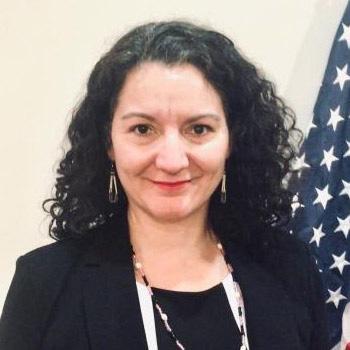
4 minute read
NWAC HOSTS SUMMIT OF AMERICAS ON VIOLENCE AGAINST INDIGENOUS WOMEN: ‘WE WILL BE SILENT NO MORE’
The knowledge that the violence suffered by Indigenous women in Canada is occurring with similar tragic results in every country of the Americas prompted the Native Women’s Association of Canada (NWAC) to call an international meeting to discuss ways to end it.
That meeting, the International Summit of the Americas on Violence Against Indigenous Women, was held online over two days at the end of March. It drew human rights experts, academics, law enforcement officials, Indigenous leaders, and women working on the ground in their respective nations together to share ideas and information.
Advertisement
In all, nearly 1,000 people registered to take part in the event, which was intended to be the genesis of an international movement to end the deaths and disappearances of Indigenous women, girls, and gender-diverse people.
“The issue of violence against women and girls is both a serious human rights violation and, frankly, a major global public health issue on the order of the pandemic,“ Anita Bhatia, the Deputy Executive Director for Resource Management, Sustainability and Partnerships at UN Women, told the Summit.
Multiple speakers at the Summit decried the lack of verifiable numbers available across the continents to demonstrate the size and scope of the problem that a national inquiry in Canada has determined to be a genocide. But some statistics suggest Indigenous women in the Americas are murdered or sexually assaulted at rates that are 10 times higher than the rates experienced by non-Indigenous women.
- SAID ANITA BHATIA
“We're talking about our relatives, and we're talking about the inner connections with what they call intimate partner violence, trafficking, every form of violence—that continuum,” Brenda Hill, the Director of Technical Assistance and Training of the National Indigenous Women’s Resource Center in the United States, told Summit participants.
The Summit ended with the presentation of a draft outcome document that urges an international response to the crisis. It calls upon Summit participants to, among other things, work together to collect data about the violence, collect best practices for combatting it, condemn states that fail to address it, and draw on the knowledge of human rights experts.
The document, which was prepared by NWAC for the consideration of other Summit participants, urges follow-up meetings and the creation of a pan-Americas working group to explore ways to end the killing.
“In Colombia, the armed conflict has led to the forced displacement of Indigenous women and girls who are commonly subjected to systematic patterns of sexual exploitation and rape in the context of the occupation of Indigenous land,” said Ms. Bhatia. “And reports also suggest that Indigenous women are at greater risk of trafficking for the purposes of sexual exploitation and violence caused by armed groups, particularly in the northern triangle of Central America, comprising Guatemala, El Salvador, Honduras, and Mexico.”
This tells us that there is an urgent need for more concerted joint action on behalf of all states and the international community, particularly in the context of COVID where all of the risk factors for violence against women and girls have been exacerbated tremendously, said Ms. Bhatia.
Karina Gould, Canada’s Minister of International Development, who was one of two Canadian federal ministers to speak at the meeting, said the Canadian government believes there is a collective duty to ensure that Indigenous women and girls have the opportunities, space, and respect they deserve.
“Gender-based violence is a barrier to the full achievement of gender equality, peace, and development, and these issues have only been exacerbated by the social, health, and economic impacts and movement restrictions of COVID 19,” said Ms. Gould.
Jose Fancisco Cali Tzay, the United Nations Special Rapporteur on the Rights of Indigenous Peoples, said the reality is that women do not enjoy equality because of the paternalistic structure of societies, and Indigenous women, in particular, face a wide variety of multifaceted and complex human rights violations that are mutually reinforcing.
This creates multiple avenues for vulnerability, said Mr. Tzay. Numerous forms of discrimination, he said, are related to gender, class, ethnicity, socioeconomic circumstances, and the right to the control of resources. Michelle Sauve, the Acting Commissioner for the Administration for Native Americans and a member of the U.S. presidential task force Operation Lady Justice, said, “The first step in addressing any problem, especially the problem of violence against women and girls and gender-diverse people, is admitting that there is a problem.”
This was the chief aim of the Summit of the Americas on Violence Against Indigenous Women. It was an international acknowledgement that the murders and disappearances are happening and that they must stop.
“We are coming together, across the Americas, to fight this evil. Things are moving ahead, things are happening. This meeting is a demonstration of that,” Lorraine Whitman, the President of NWAC, said in her closing statement. “Now I have hope that the future may be brighter. I have hope that, working with all of you, we can bring this genocide to an end.”
- SAID JOSE FRANCISCO CALI TZAY









